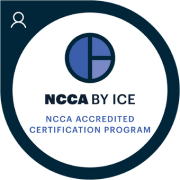EM 2019 LLSA Reading List
Acetaminophen
Levine M, Stellpflug SJ, Pizon AF, Peak DA, Villano J, Wiegand T, et al. Hypoglycemia and lactic acidosis outperform King’s College criteria for predicting death or transplant in acetaminophen toxic patients. Clin Toxicol (Phila) 2018 July;56(7):622-25.
- The development of post-resuscitation acidosis, which is often driven by lactic acid accumulation, has been shown to be a strong predictor of ___________________ in acetaminophen overdose.
- In this study, the combination of ___________________, ___________________, and ___________________ were better predictors of the composite endpoint of death or transplant than the King’s College criteria.
Antiretrovirals
Margolis AM, Heverling H, Pham PA, Stolbach A. A review of the toxicity of HIV medications. J Med Toxicol 2014 Mar;10(1):26-39.
- Antiretroviral regimens today typically have three drugs, consisting of two ___________________ with either a boosted ___________________ or ___________________.
- The hallmark toxicity of the NRTI class is ___________________.
Diagnostic Aids (e.g., contrast agents)
Layne KA, Dargan PI, Archer JRH, Wood DM. Gadolinium deposition and the potential for toxicological sequelae – a literature review of issues surrounding gadolinium-based contrast agents. Br J Clin Pharmacol 2018 Nov;84(11):2522-34.
- Gadolinium deposition has been shown to primarily occur in the ___________________ nucleus and ___________________.
- No well-designed studies have produced evidence that patients have developed ___________________ or ___________________ illness following gadolinium-based contrast agent administration.
Epidemiology
Kelkar AH, Smith NA, Martial A, Moole H, Tarantino MD, Roberts JC. An outbreak of synthetic cannabinoid-associated coagulopathy in Illinois. N Engl J Med 2018 Sept;379(13):1216-23.
- Anticoagulant tests were positive for ___________________, ___________________, ___________________, and ___________________.
- The most common bleeding symptom in the patients at presentation was ___________________, and the most common nonbleeding symptom was ___________________.
Industrial, Household, and Environmental Toxicant
Greenberg MI, Vearrier D. Metal fume fever and polymer fume fever. Clin Toxicol (Phila) 2015 May;53(4):195-203.
- The most commonly implicated metal exposure associated with metal fume fever involves the inhalation of ___________________.
- As with metal fever, polymer fume fever is typically a benign, self-limited disease with symptom resolution over a ___________________ period.
Lead
Braun JM, Hornung R, Chen A, Dietrich KN, Jacobs DE, Jones R, et al. Effect of residential lead-hazard interventions on childhood blood lead concentrations and neurobehavioral outcomes: a randomized clinical trial. JAMA Pediatr 2018 Oct;172(10):934-42.
- The interventions included installing a ___________________ if the lead concentration in drinking water exceeded 2ug/L and replacing windows that have lead-based paint or show more than ___________________% deterioration.
- Blood lead concentrations from 1 to 8 years of age were ___________________ among children in the intervention group compared with children in the control group.
Opioids, Injury Prevention
Babu KM, Brent J, Juurlink DN. Prevention of opioid overdose. N Engl J Med 2019;380(23):2246-55.
- New, persistent opioid use is increasingly recognized as one of the most common complications after ___________________.
- There is now widespread recognition that coprescribing of opioids and ___________________ is hazardous.
Psychoactive Drugs and Hallucinogens (Marijuana)
Noble MJ, Hedberg K, Hendrickson RG. Acute cannabis toxicity. Clin Toxicol (Phila) 2019 Aug;57(8):735-42.
- Among all ages, ___________________ and ___________________ were more likely following inhalation exposures compared to ingestions.
- Children had a higher likelihood of intensive care unit admission and intubation following exposure to ___________________ products.
Singh A, Saluja S, Kumar A, Agrawal S, Thind M, Nanda S, et al. Cardiovascular complications of marijuana and related substances: a review. Cardiol Ther 2018 Jun;7(1):45-59.
- ___________________ is the most commonly reported adverse cardiovascular effect of cannabis use.
- The risk of AMI increases nearly ___________________ within an hour of exposure to cannabis compared to nonusers.
Radiological
Kazzi ZN. Acute radiation injuries. In: Brent J, editor. Critical care toxicology: diagnosis and management of the critically poisoned patient. Springer 2017: 605-17.
- The biological effects of ionizing radiation result directly from the interaction of the alpha or beta particles with ___________________ or indirectly from the production of ___________________ through gamma ray-induced hydrolysis of intracellular water.
- When the dose received is between 2 and 6 Gy, the ___________________ system is primarily affected.
Salicylates
EXTRIP Workgroup. Extracorporeal treatment for salicylate poisoning: systematic review and recommendations from the EXTRIP Workgroup. Ann Emerg Med 2015 Aug;66(2):165-81.
- Extracorporeal treatment is suggested if the blood pH is less than or equal to ___________________.
- The workgroup favored ___________________ over continuous renal replacement techniques, even in the context of hypotension.
Sympathomimetics
Cediel G, Carrillo X, García-García C, Rueda F, Oliveras T, Labata C, et al. β-Blocker treatment and prognosis in acute coronary syndrome associated with cocaine consumption: the RUTI-Cocaine Study. Int J Cardiol 2018 Jun;260:7-10.
- Beta-blocker therapy is a ___________________ treatment option.
- The myocardial protective benefits of beta-blockers may offset cocaine derived concerns and may provide important long-term ___________________ benefits.
Warfare and Terrorism, Chemical
Henretig FM, Kirk MA, McKay CA Jr. Hazardous chemical emergencies and poisonings. N Engl J Med 2019 Apr;380(17):1638-55.
- For gases, the estimated median lethal dose ___________________ reflects both the ___________________ inhaled and the ___________________ of exposure.
- Fourth generation nerve agents, also known as Novichok agents, persist on skin and environmental surfaces for ___________________ days, and have a latency period of ___________________ after dermal exposure.
Click to see all answers
Acetaminophen
- The development of post-resuscitation acidosis, which is often driven by lactic acid accumulation, has been shown to be a strong predictor of mortality in acetaminophen overdose.
- In this study, the combination of hypoglycemia, lactic acidosis, and elevation of the PT were better predictors of the composite endpoint of death or transplant than the King’s College criteria.
Antiretrovirals
- Antiretroviral regimens today typically have three drugs, consisting of two NRTIs with either a boosted PI or NNRTI.
- The hallmark toxicity of the NRTI class is mitochondrial toxicity.
Diagnostic Aids (e.g., contrast agents)
- Gadolinium deposition has been shown to primarily occur in the dentate nucleus and globus pallidus.
- No well-designed studies have produced evidence that patients have developed neurologic or systemic illness following gadolinium-based contrast agent administration.
Epidemiology
- Anticoagulant tests were positive for brodifacoum, difenacoum, bromadiolone, and warfarin.
- The most common bleeding symptom in the patients at presentation was gross hematuria, and the most common nonbleeding symptom was abdominal pain.
Industrial, Household, and Environmental Toxicant
- The most commonly implicated metal exposure associated with metal fume fever involves the inhalation of zinc oxide fumes.
- As with metal fever, polymer fume fever is typically a benign, self-limited disease with symptom resolution over a 12 – 48 h period.
Lead
- The interventions included installing a tap water filter if the lead concentration in drinking water exceeded 2ug/L and replacing windows that have lead-based paint or show more than 10% deterioration.
- Blood lead concentrations from 1 to 8 years of age were not significantly lower among children in the intervention group compared with children in the control group.
Opioids, Injury Prevention
- New, persistent opioid use is increasingly recognized as one of the most common complications after elective surgery.
- There is now widespread recognition that coprescribing of opioids and benzodiazepines is hazardous.
Psychoactive Drugs and Hallucinogens (Marijuana)
- Among all ages, tachycardia and neuroexcitation were more likely following inhalation exposures compared to ingestions.
- Children had a higher likelihood of intensive care unit admission and intubation following exposure to concentrated products.
- Ischemic stroke is the most commonly reported adverse cardiovascular effect of cannabis use.
- The risk of AMI increases nearly fivefold within an hour of exposure to cannabis compared to nonusers.
Radiological
- The biological effects of ionizing radiation result directly from the interaction of the alpha or beta particles with DNA or indirectly from the production of free radicals through gamma ray-induced hydrolysis of intracellular water.
- When the dose received is between 2 and 6 Gy, the hematopoietic system is primarily affected.
Salicylates
- Extracorporeal treatment is suggested if the blood pH is less than or equal to 7.20.
- The workgroup favored hemodialysis over continuous renal replacement techniques, even in the context of hypotension.
Sympathomimetics
- Beta-blocker therapy is a safe treatment option.
- The myocardial protective benefits of beta-blockers may offset cocaine derived concerns and may provide important long-term prognostic benefits.
Warfare and Terrorism, Chemical
- For gases, the estimated median lethal dose LCt50 reflects both the concentration inhaled and the duration of exposure.
- Fourth generation nerve agents, also known as Novichok agents, persist on skin and environmental surfaces for many days, and have a latency period of several hours after dermal exposure.



